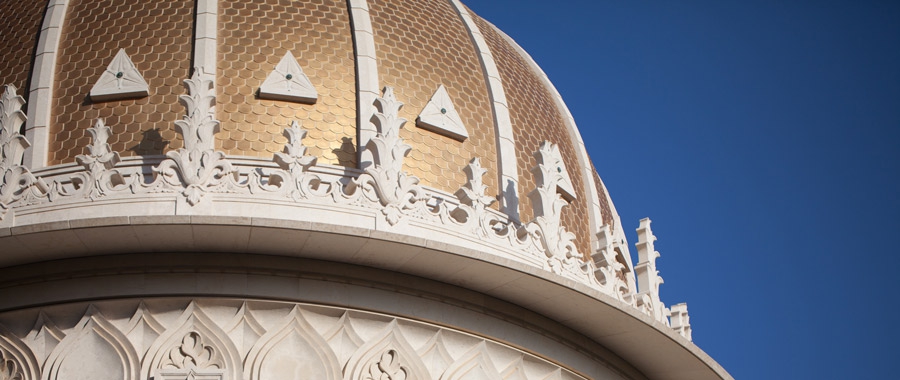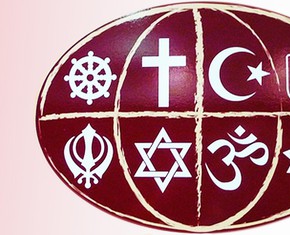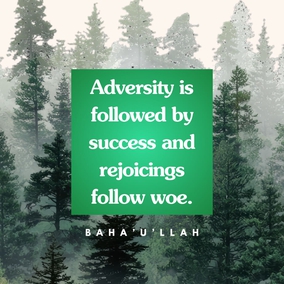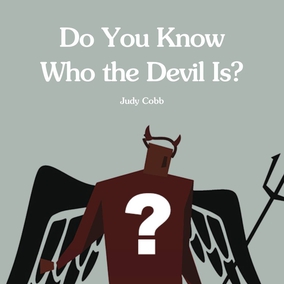The views expressed in our content reflect individual perspectives and do not represent the authoritative views of the Baha'i Faith.
About a year ago, with the 200th anniversary of the birth of the Bab coming closer, I felt I should try to write a book dedicated to this global Baha’i celebration as a kind of personal tribute.
As I wrote the various chapters of that book, they gave me an opportunity to reflect on the advent of the revelation of the Bab and on traces leading to it within my own cultural heritage in the heart of Europe.
It became clear to me that my spiritual journey had to start in chapter 13 of Abdu’l-Baha’s Some Answered Questions and end with my big worries on global warming – not an easy route to travel, as I learned in the course of this year!
I live in a country – Germany – with an overwhelming consensus in all parts of society that manmade climate change is convincingly grounded in scientific facts and their analysis, and that humanity must take action with full responsibility for that global warming.
I feel comfortable in saying this after a lifelong career as a physicist, and as a strong believer in the Baha’i principle of balance between science and religion as two complementary ways of looking at reality. I also admit that I have grown up in an area, Munich, where I could not ignore the significance of Christian art, as a visualization of what has moved people over centuries in the depths of their hearts and their religious beliefs – the other side of the coin of scientific reality. In the course of this endeavor, many things became clearer to me than ever before: the term “apocalypse” has a much wider meaning than what most people have always thought about it.
Taking more note of people’s perceptions of the growing challenges ahead of us – not only climate change, also the ever-growing damage to the environment and the deepening threats to world peace – I began to realize that a new kind of secular apocalyptic anxiety is spreading around us. I sense a growing worry all over the world about a possible breakdown of our entire civilization, along with the perception that our space of action is gradually shrinking. So it’s no surprise why the mere word “apocalypse” has become more and more visible in public debates and discourses over the past decade.
While thinking about all of this, I recalled Abdu’l-Baha’s interpretation of some of the prophetic visions of St. John of Patmos in Revelation, the last book of the New Testament. In fact, the almost common belief in Christianity – shared by traditional believers up to the present day – has always focused on these apocalyptic signs as relating to the coming of the end of the “old earth and heaven.” Traditional Christians would describe those prophecies of the return of Christ and a “New Jerusalem” coming down from a “new heaven.”
Yet Abdu’l-Baha commented, in his book Some Answered Questions, that there is always an outward sense of the verses of the Revelation of St. John, but also an inward interpretation and a symbolic meaning:
Likewise, [in the Book of Revelation] the religion of God is described as the Holy City or the New Jerusalem. Clearly, the New Jerusalem which descends from heaven is not a city of stone and lime, of brick and mortar, but is rather the religion of God which descends from heaven and is described as new. – Abdu’l-Baha, Some Answered Questions, newly revised version, p. 77.
Referring to Chapter 12 of the Book of Revelation, Abdu’l-Baha then offers an entirely new meaning of it as an allegorical narrative of the birth of the revelation of the Bab.
For people used to Christian ways of interpretation this may come as a surprise: it opens a new chapter of reading the biblical apocalypse on the horizon of Islamic history and tradition, and not exclusively that of Christianity. Obviously the Bab appeared on this horizon and declared his mission in 1844 as the “gate” to Baha’u’llah – and at the same time he gave a new meaning to the Book of Revelation.
What an amazing interpretation when Abdu’l-Baha describes the “woman in heaven” in St. John’s vision, who is clothed, like a bride, with the sun and has the moon under her feet:
This woman is that bride, the religion of God that descended upon Muhammad. The sun with which she was clothed, and the moon which was under her feet, are the two governments which are under the shadow of that religion, the Persian and the Ottoman, for the emblem of Persia is the sun and that of the Ottoman Empire is the crescent moon. – Ibid.
In the Book of Revelation, the symbolic woman gives birth to her child – the revelation of the Bab – while a red seven-headed dragon is ready to devour her child as soon as it is born. In fact, the dragon stands as a metaphor for the Umayyad dynasty of the early days of Islam, which was eager to kill any descendant from the lineage of Muhammad as they feared a future loss of power.
Yet over almost two thousand years of Christian interpretation, this woman in heaven stood first for “true belief,” as mediator between God and His church, later the church itself and finally for Mary, mother of Jesus. The dragon was always seen as the enemy of the church or true belief: in the first centuries as metaphor for the Roman king Herod or the emperor Nero, and during the Reformation as the Roman pope. Let us not forget: St. John did not name in his Revelation the figures of his prophetic visions – probably for a good reason. This left much room open for interpretation according to the needs of the time, and it lies in the nature of prophecies that they become clear only once fulfilled.
















Comments
Sign in or create an account
Continue with Googleor